| Piassava | [German version] |
Table of contents |
|
| General: | ||
| Product information | ||
| Packaging | ||
| Transport | ||
| Container transport | ||
| Cargo securing | ||
Product information
Product name
| German | Piassava |
| English | Piassava |
| French | Piassava |
| Spanish | Piassava |
| Scientific | Attalea funifera |
| CN/HS number * | 5305 9 ff. |
(* EU Combined Nomenclature/Harmonized System)
Product description
Piassava belongs to the category fibers/fibrous materials, which are classified as follows [24]:
Plant hairs:
| Cotton seed-hairs | |
| Kapok tree fruit hairs |
Stalk fibers from dicotyledonous plants (soft fibers):
| Flax, ramie (fine spinnable fibers) | |
| Hemp, jute, kenaf (coarse spinnable fibers) |
Leaf fibers (hard fibers):
| Sisal, Manila hemp, palm fibers (poor spinning characteristics) |
Bast:
| Linden, raffia palm, willow |
Basketwork material:
| Coconut fiber, chair cane, halfa, piassava, esparto |
Like chair cane and raffia, piassava is a palm fiber (= leaf or leaf rib fiber from tropical palm species (Palmae)). The main source is the Attalea funifera palm, which is native to the tropical forests of the Amazon and grows to up to 15 m in height.
The piassava fiber is a yellow to dark brown, resilient fiber of varying thickness.
Piassava fibers are divided into two groups. The „Bahia“, „Para“, „Venezuela“ and „Madagascar“ piassavas differ from the „Sierra Leone“, „Liberia“ and „Nigeria“ piassavas.
Arenga or Gumati fiber, a somewhat darker fiber than piassava, comes bundled in bales from Indonesia and has the same characteristics as piassava.
Quality / Duration of storage
Piassava is classified by quality as follows:
| „Madagascar“ piassava (highest quality) | |
| „Bahia“ piassava | |
| „Para“ piassava | |
| „Venezuela“ piassava | |
| „Nigeria“ piassava | |
| „Sierra Leone“ piassava | |
| „Liberia“ piassava (lowest quality) |
Differences in quality between countries of origin are considerable.
Moisture-damaged goods must be rejected prior to loading, as mustiness, decay and rusting of the steel straps may cause considerable depreciation
Subject to compliance with the appropriate temperature and humidity/moisture conditions, duration of storage is not a limiting factor as regards transport and storage life.
Intended use
Depending on quality, the resilient piassava fibers are processed into brooms and brushes. They are also made into mats and ropes.
Countries of origin
This Table shows only a selection of the most important countries of origin and should not be thought of as exhaustive.
| Europe | |
| Africa | Sierra Leone, Nigeria, Liberia, Madagascar |
| Asia | Indonesia |
| America | Brazil, Venezuela |
| Australia |
Back to beginning
Packaging
Piassava is packaged in various ways depending on its country of origin:
Venezuela: in conical bundles or „pigtails“, sometimes strapped with bast and sometimes with steel strapping and varying in weight between 15 and 35 kg.
Sierra Leone and Liberia: unpackaged in standard 25 kg bundles, wound round several times with steel wire and cut to lengths of 20 – 30 cm.
Madagascar: in 100 kg bales protected with bast mats.
Nigeria: sorted in accordance with the length of the cut fibers, unpackaged in bundles with weights ranging between 20 and 60 kg.
Brazil: in unpackaged bundles up to 1.50 m long, tied with steel strapping or wire.
| Marking of packages | ||
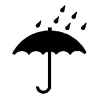 Keep dry |
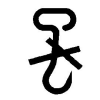 Use no hooks |
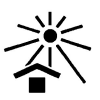 Keep away from heat (solar radiation) |
Back to beginning
Transport
Symbols
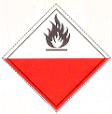 Spontaneously combustible, Class 4.2 IMDG Code |
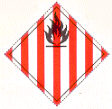 Fire hazard (Flammable solids), Class 4.1 IMDG Code |
 General cargo |
Means of transport
Ship, truck, railroad
Container transport
Standard containers, subject to compliance with water content of goods, packaging and flooring.
Cargo handling
In damp weather (rain, snow), the cargo must be protected from moisture, since piassava is strongly hygroscopic and readily absorbs moisture. This leads to mustiness and decay.
Do not use hooks for cargo handling, since they may lead to sparking when they come into contact with metal objects.
In addition, smoking is absolutely prohibited during cargo handling.
Stowage factor
| 2.83 – 3.40 m3/t (bundles) [1] | |
| 2.79 – 3.07 m3/t (bales) [11] | |
| 3.06 – 3.26 m3/t (bales) [1], [14] | |
| 4.25 m3/t (bundles) [1], [14] |
Stowage space requirements
Cool, dry
Segregation
Fiber rope, thin fiber nets
Cargo securing
The cargo is to be secured in such a way that the bundles/bales or strapping are not damaged. Bursting or chafing of steel strapping or wires may lead to sparking and external ignition.
Back to beginning
Risk factors and loss prevention
RF Temperature
Piassava requires particular temperature, humidity/moisture and possibly ventilation conditions (SC VI) (storage climate conditions).
Favorable travel temperature range: no lower limit – 25°C
Piassava must be stowed away from heat sources.
Every hold should be equipped with means for measuring temperature. Measurements must be performed and recorded daily.
Back to beginning
RF Humidity/Moisture
Piassava requires particular temperature, humidity/moisture and possibly ventilation conditions (SC VI) (storage climate conditions).
| Designation | Humidity/water content | Source |
| Relative humidity | 65% | [1] |
| Water content | 16% | [14] |
| Maximum equilibrium moisture content | 70% | [1] |
Water content may be very high, so loose piassava should not be stowed together with moisture-sensitive products.
Piassava behaves strongly hygroscopically (hygroscopicity). It must be protected from sea, rain and condensation water and also from high levels of relative humidity, as otherwise the resultant mustiness, rot and rusty steel strapping or wire may cause depreciation.
When subsequently dried, moist piassava becomes fragile and loses elasticity.
Back to beginning
RF Ventilation
Piassava requires particular temperature, humidity/moisture and possibly ventilation conditions (SC VI) (storage climate conditions).
If the product is loaded for shipment in a dry state, it does not have any particular ventilation requirements.
Problems arise if the product, packaging and/or ceiling/flooring are too damp. In this case, the following ventilation measures should be implemented:
Air exchange rate: 10 changes/hour (airing)
Since piassava very readily absorbs oxygen, before anybody enters the hold, it must be ventilated and if necessary a gas measurement carried out, since a shortage of oxygen may endanger life.
Back to beginning
RF Biotic activity
Piassava displays 3rd order biotic activity.
It belongs to the class of goods in which respiration processes are suspended, but in which biochemical, microbial and other decomposition processes still proceed.
Back to beginning
RF Gases
Piassava very readily absorbs oxygen. An oxygen shortage may therefore arise in closed holds and containers. Before anybody enters such holds, the holds must be ventilated and a gas measurement carried out where necessary.
An increase in CO2 and CO content indicates a cargo fire. The TLV of the hold air is 0.49 vol.%.
Back to beginning
RF Self-heating / Spontaneous combustion
Piassava is assigned to Class 4.1 of the IMDG Code (Flammable solids). However, its specific characteristics and negative external influences (see below) may cause it to behave like a substance from Class 4.2 (Substances liable to spontaneous combustion) of the IMDG Code or ADR.
Its high cellulose content makes piassava liable to catch fire through external ignition. Therefore, it must always be protected from sparks, fire, naked lights and lit cigarettes. Smoking is absolutely prohibited. Sparks may arise from bursting or chafing of the steel straps or wires (and also as a result of inadequate cargo securing in the hold or container) and cause a cargo fire. In accordance with the IMDG Code, ventilation openings leading into the hold should be provided with spark-proof wire cloth.
Piassava must be stowed away from animal and vegetable fats/oils, oil-bearing seeds/fruits, copra and raw wool, since oil-impregnated fibers promote cargo fire.
Fire-fighting is best performed using CO2 or foam.
Back to beginning
RF Odor
| Active behavior | Piassava is neutral in odor. |
| Passive behavior | Piassava is sensitive to unpleasant or pungent odors. |
Back to beginning
RF Contamination
| Active behavior | Piassava does not cause contamination. |
| Passive behavior | Piassava is sensitive to contamination by dust, dirt, fats/oils and rust as well as oil-containing goods, such as oil-bearing seeds/fruits, copra, raw wool etc., since oil-impregnated fibers promote self-heating/cargo fire. Holds or containers must accordingly be clean and in a thoroughly hygienic condition. Residues from previous cargoes, such as ores, stones, coal, metal filings, fertilizers etc., result in losses. |
Back to beginning
RF Mechanical influences
Care must be taken to ensure that mechanical influences do not cause damage to strapping.
Back to beginning
RF Toxicity / Hazards to health
Since piassava is highly oxygen-absorbent, a life-threatening shortage of oxygen may arise in the hold or container. Thus, before anybody enters the hold, it must be ventilated and, if necessary, a gas measurement carried out. The TLV for CO2 concentration is 0.49 vol.%.
Back to beginning
RF Shrinkage/Shortage
Weight losses may arise due to drying of bundles/bales which have been packaged when excessively moist.
Losses of volume are caused by bursting of bundles, which are generally loosely tied up. Unclearly marked bales may result in losses of volume due to incorrect delivery.
Back to beginning
RF Insect infestation / Diseases
No risk.
Back to beginning
